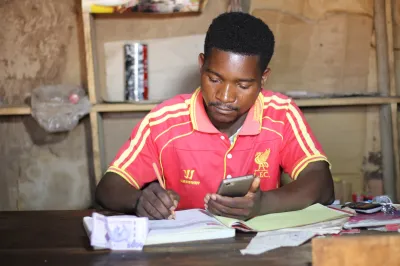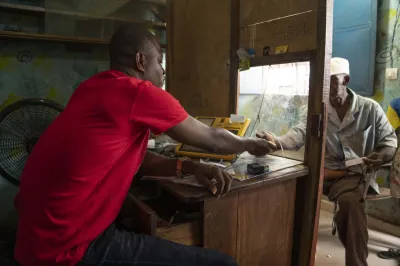Cash Management Innovation in Latin America
There is a well-known 'chicken and egg' challenge for mobile financial services: if there are not many customers, then there will not be many agents, and vice-versa. An ongoing trend in Latin America is bringing forward an innovative solution to this problem. A far-reaching network of small retailers who process cash payments in real time has emerged, mostly fuelled by the need to cut the operational costs of airtime top-ups paid in cash. They are simply cash processing networks, as they are not yet banking agents. In Argentina, for example, these networks have more than 75,000 agents according to industry insiders, and are mostly under the radar when it comes to mobile financial services.
For example, Telerecargas’ network of 5000 agents collected USD$100 million and processed over 24 million transactions in the last year. Could this be a way to forge a Latin American alternative path to address the problem of agent capacity? Building large profitable cash processing networks first, and then launching a radically innovative and disruptive service.
This is certainly a different path to that which most regional players in the region are following, especially for mobile wallets. Wanda for example, is following a garage start-up approach where they focus on feature and product design in the expectation that it will drive customer adoption and that cash processing agents will then follow. They see liquidity management as a residual element in the value chain. How fruitful could this development strategy be for addressing the chicken and egg problem?
The top-down approach or "northern model" might be suitable for banked economies where cash processing and management is a marginal issue as it is performed more or less efficiently by banks. However, this approach is certainly not adequate for economies where banks have not been able to reach large segments of the population.
In fact, liquidity management in unbanked areas needs to be one of the main sources of innovation and efficiency gains. This is what I call the “southern model”. This model gets along much better with a bottom-up answer to the chicken/egg problem, where cash management becomes a fundamental prerequisite for innovation. A bottom up approach implies two separate goals that require different tools: First, focusing on the sustainability, and thus the profitability of the cash processing network; and second, launching the most innovative services and seeking large customer adoption with the confidence that the network will support it. To meet the first goal, a high volume of transactions and a scalable infrastructure are required. The second goal requires disruptive, yet sometimes lengthy product development phases where customer adoption can be anaemic.
The Latin American cash processing networks mentioned above have done a great job at reaching the first goal in the bottom-up approach. They are making profits from a well positioned and scalable network that conducts transactions in real-time and provides wholesale rates of 1% or less. These networks have varying degrees of innovation that enable a very efficient and low cost operation, for example:
- Cash micro-movements: very short collection cycles, which avoid cash stacking up at any point, reducing risk and making banking security levels superfluous.
- Layered services and scalability: agents are provided with a full range of services that run on the same online platform (top-ups, bill payments, remittances, etc.) and the cost of expanding this portfolio of services is marginal.
- Long tail focus: their business model aims to grow horizontally in agent numbers in order to keep cash processing costs low, rather than seeking single agents with high volume.
Can these low cost cash processing networks be the avant-garde business models for financial inclusion in the region? They are low-cost innovative platforms capable of cash management for almost any financial service: micro-credits, micro-insurance, online purchases, savings products, etc. Above all they are able to endure the low volume phase of any new product launch cycle, while keeping capillarity high.
Conversely, one of the main challenges for these cash processing networks is keeping up efficiency levels as cash collection volumes grow. At the same time, their diversification process is slow, as revenues still flow mostly from airtime top-ups and additional services such as bill payments or remittances still make only a minor contribution.
New players in the field of financial services, whether they use mobile or not, could either learn from their experience in agent network development to solve this chicken or egg problem or could opt for a less capital- and time-intensive approach and outsource their cash management to them.
Altogether, in predominantly unbanked economies expanding the frontier of financial services has as much to do with cash processing as it has to do with product innovation. This is the core idea of the “southern model”; but while product innovation can take place in a garage, cash processing can only be done on the streets, or as it was put to me recently: “desde el barro” (from the mud).




Add new comment